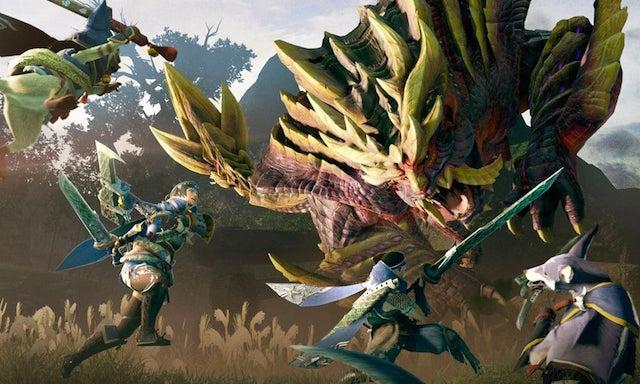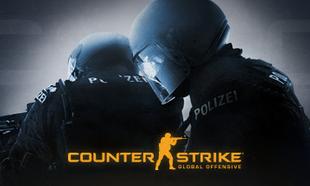'Monster Hunter' is a series that can often seem too difficult for newcomers to give up their time to learn how to play.
It is a deep, complex game that takes hours to master all the strategies and tactics needed to become a master hunter. However, 'Monster Hunter Rise', like its bigger brother, 2017's 'Monster Hunter World', is much more accessible for newer players than previous entries.
Indeed, 'Monster Hunter Rise' follows a similar gameplay loop to 'Monster Hunter World'. The vast majority of the game follows the player accepting quests to – as the name would suggest – hunt monsters, and then scavenge monster parts from their remains to craft new, better loot to continue hunting bigger and more fearsome wyverns.
To aid you in hunting endeavours, there is a wide range of weapons to suit various play styles such as huge sluggish anime-inspired great swords or nimble 'God of War'-style dual blades. Each of the 14 distinct weapon categories come with their own unique movement and move sets, catering to the player's preference and their role within a team. Each weapon has its own skill trees too, most of which can be crafted from monster parts, ore or other materials to give stat boosts and elemental effects. To master one alone takes the player hours, let alone all 14, aiding in incredible replayability and continued play.
In terms of performance comparative to 'Monster Hunter World', it is apparent that the Nintendo Switch isn’t as powerful as the previous console generation. Here, the open-ended world environments are wider and offer a larger sense of scale, but this is at the detriment of detail within the world. In some instances, this makes the game more manageable than in 'Monster Hunter World'. You’ll spend less time searching for the correct path to take while hunting the same monster who’s fled for the second or third time halfway across the map, making it less frustrating when under time pressure to finish off your foe.
On the other side of it, this approach sacrifices the discovery of the map, amassing to a rush through each of the encounters and leading to the player disengaging from the world. This could well be the desired effect by the developer, designed for players on the go. Of course, in the current climate, this isn’t a reality for most gamers. The result is that it can feel as though you’re grinding through the experience in a game map that isn't as full as it could or should be.
Another addition that adds to the heightened pace in 'Monster Hunter Rise' is the Palamute. It's a dog-like companion that the player can ride across the map at a much greater speed than they can run themselves. This might seem contradictory, but this is a welcomed inclusion. Not only is the Palamute an adorable partner alongside the returning cat like Palico, but they are such a great way to get around quickly. The player does miss out on detail traversing this way in 'Monster Hunter Rise', but as there is less detail to observe and become engrossed in, the need for this faster travel is an unexpected benefit.
Vertical traversal too has had some quality-of-life improvements with the inclusion of Wirebugs. These act like a grappling hook of sorts to snap the player to a point, often for climbing cliff faces or quickly dodging out of the path of a stampeding monster. Furthermore, Great Wirebugs can be used in specific areas of the various maps marked with Jewel Lilies to catapult the player to higher areas. They're handy if the monster you’re hunting flies away to hard-to-reach areas and saves the player an arduous task of venturing through a longer path in a less detailed world to lose yourself in.
While the majority of the game’s hunts and activities play out almost identically to 'Monster Hunter World', this game includes some differences and a new horde like mode, titled Rampage, which offers a new gameplay scenario. The mechanics here make the mode feel more like a combination of standard fare 'Monster Hunter' gameplay with added tower defence strategies. Urging the player to set up defences like auto-turrets, bombs and special characters to fend off multiple wyverns. Other differences include some minor weapon balancing changes, and endemic life (smaller life across the ecosystems) offering stat boosts for each venture outside of Kamura Village.
Visually speaking, it is again evident that the hardware of the Nintendo Switch can’t replicate what was seen before in 'Monster Hunter World', either on beefier spec console and PC counterparts. That said, playing the game on the smaller portable screen means the difference between 4k and 720p is less apparent. As expected, there’s less detail in the environment to pick out, with the wider open worlds also beneficial to the sense of graphical fidelity.
All in all, if you’re going into 'Monster Hunter Rise' expecting more of 'Monster Hunter World' in a portable format, then you’re not going to be disappointed, and that’s the enjoyable experience you’ll be getting from it. Although, if you’re expecting it to equal in every facet of detail as 'Monster Hunter World', then you may need to lower your expectations.
Monster Hunter Rise is now available on Nintendo Switch for a price of €59.99 on the Nintendo eShop.










































































